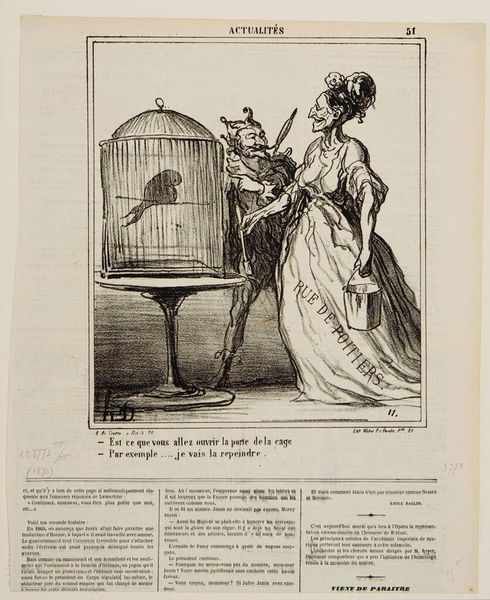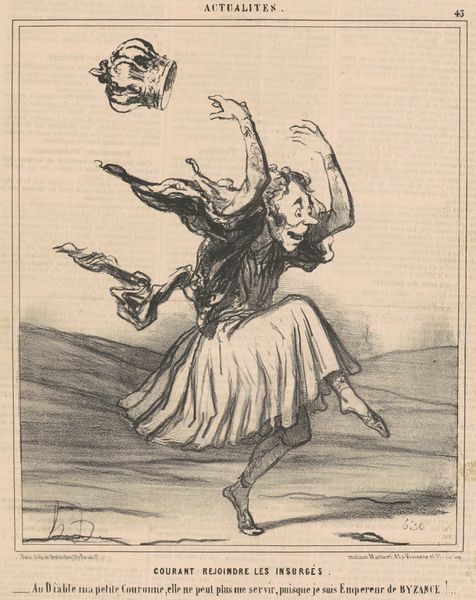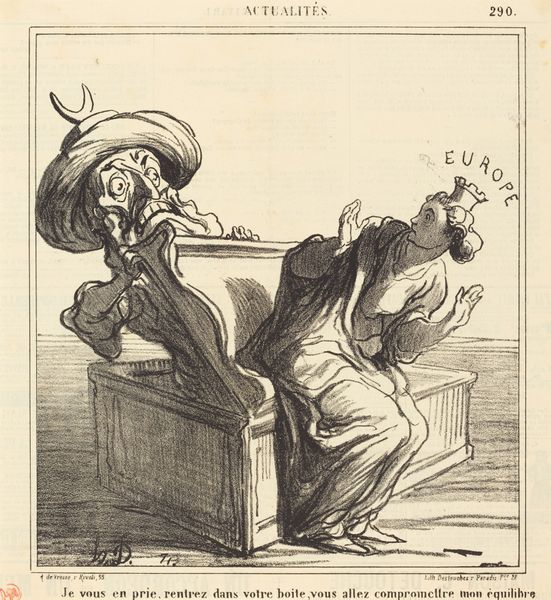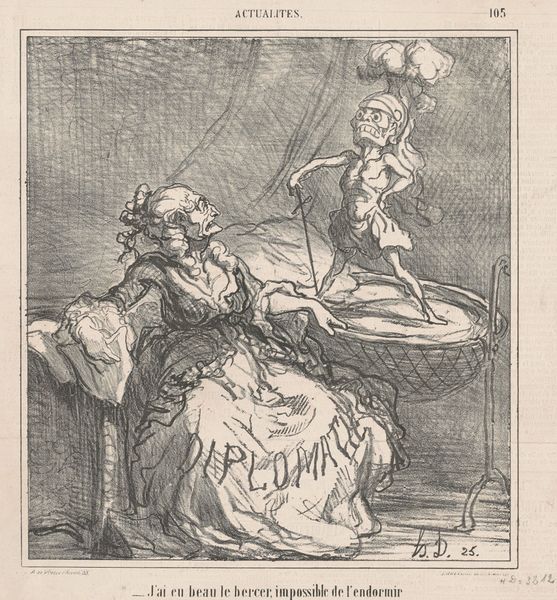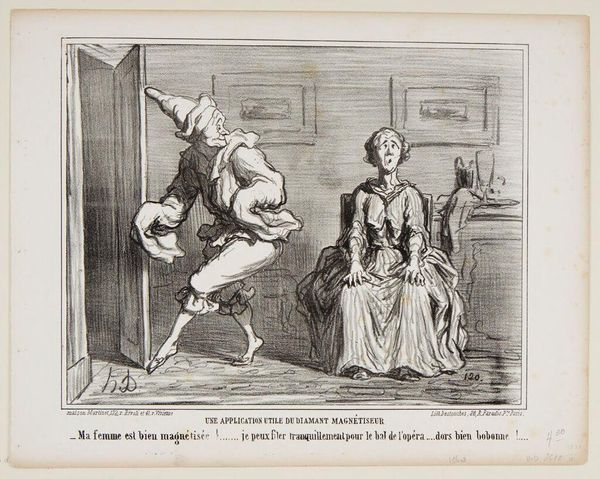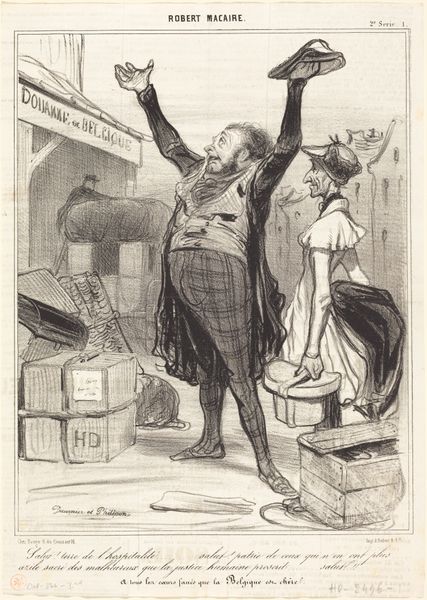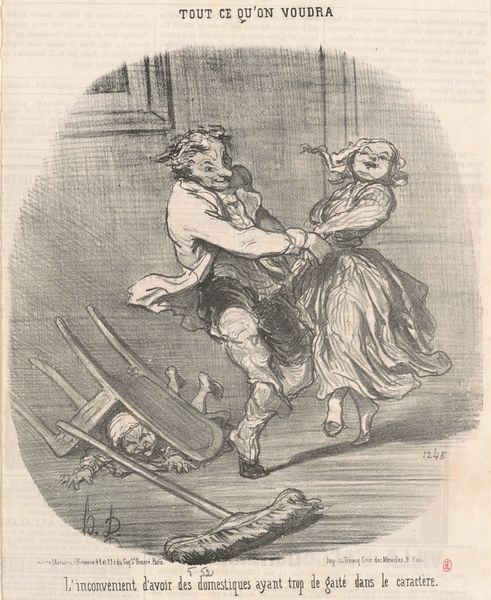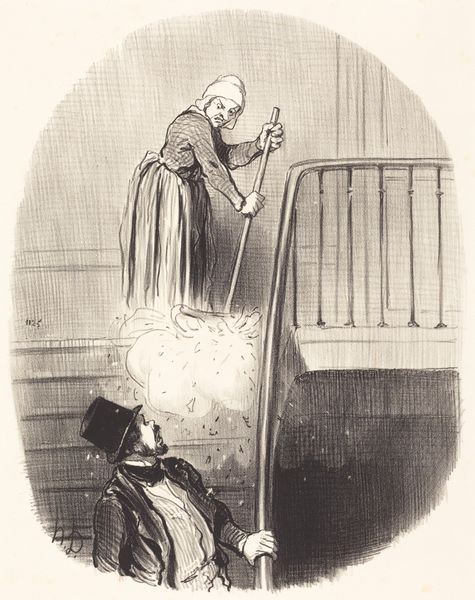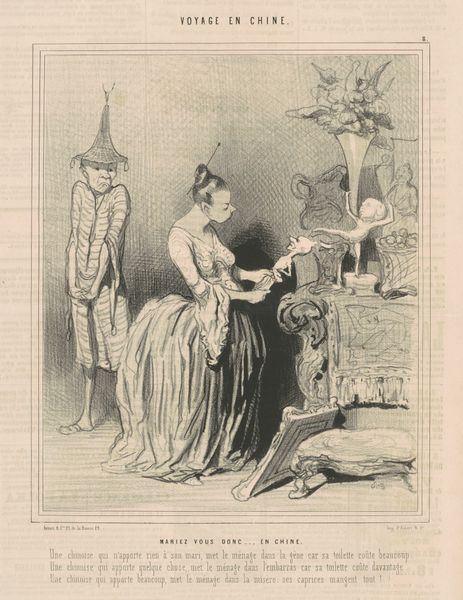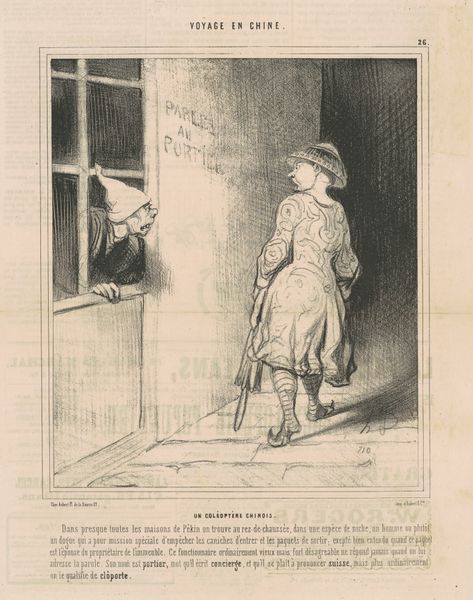
Est-ce que vous allez ouvrir la porte de la cage ... c. 19th century
0:00
0:00
lithograph, print
#
lithograph
# print
#
caricature
#
social-realism
#
romanticism
#
genre-painting
#
realism
Copyright: National Gallery of Art: CC0 1.0
Curator: This is a lithograph by Honoré Daumier, dating from approximately the 19th century. The work is titled "Est-ce que vous allez ouvrir la porte de la cage..." Editor: Immediately, I see this image is sharply satirical, but the figures are unsettlingly distorted. A gaunt woman with exaggerated features stands alongside a devilish man next to a birdcage, and there is an odd mix of social commentary and grotesque caricature. Curator: Absolutely. Daumier was a master of social realism, frequently using caricature to critique the bourgeoisie and political figures of his time. His prints were widely circulated in newspapers. We need to remember the social context of the Rue de Poitiers which names the street associated with a political alliance led by Adolphe Thiers in the 1840's Editor: That gives an interesting angle, the reference to the "Rue de Poitiers" scrawled on her dress. The bird trapped in the cage then could symbolize the restricted freedoms or political imprisonment. It definitely makes it a statement about power and oppression of the ordinary citizens.. Curator: His choice of lithography allowed for relatively mass production. Daumier targeted political hypocrisy through widely distributed images aimed at shaping public opinion during a volatile political time in France, specifically referring to this coalition's conservative politics. Editor: Right. The directness of the lithograph is part of its strength. Daumier is speaking to the everyman in order to question figures of power at the time and show their actions. The way he employs this medium creates a space for social change within society. Curator: Indeed, Daumier used his artistic platform to comment on and challenge societal norms and power structures, making it crucial that we consider not only his work but its distribution. Editor: His commitment to social commentary through his artistic lens makes Daumier such a significant figure. I look at it now and this becomes not just a historical snapshot, but unfortunately a reflection on the issues that still continue in political struggles worldwide.
Comments
No comments
Be the first to comment and join the conversation on the ultimate creative platform.
